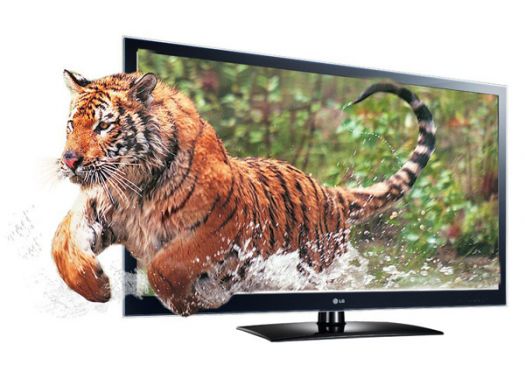In the 2011 battle between active and passive 3D TV, few companies have been as vocal about the (claimed) superiority of a passive 3D solution than LG. And a study which was released this week (funded by LG) is adding more fuel to the fire. The company just announced survey results that say that consumers actually prefer passive 3D technology over active 3D.
Passive 3D TVs use technology that is similar to what's being used in movie theaters: separation of the left and right eye images on screen via a technique called circular polarization, and passive polarized glasses that allow each eye to see the correct halves of the stereoscopic image so your brain sees the illusion of 3D. But instead of a dual projection system and special silver screen material (used in theaters), passive 3D sets at home use something called a Film Patterned Retarder (FPR) incorporated into the TV screen to separate the left and right images. The same passive glasses used in theaters work at home using the passive system. Proponents of passive 3D technology claim a brighter image, less flicker and little to no crosstalk as advantages of passive 3D over active 3D.
LG wanted to find out which technology consumers liked best, so they commissioned Morpace to do the study. The end result found that 80 percent of consumers prefer LG's passive 3D TVs over the likes of active 3D sets from Sony and Samsung.
Before you claim bias, it's important to note that LG is one of the only companies currently supporting both 3D platforms: active 3D technology is used for the company's 3D-ready plasma TVs while passive is used for their 3D-enabled LED/LCD lines. However, LG did not throw any of its own active 3D sets into the ring. The study pitted LG's 47-inch 47LW5600 1080p Cinema 3D TV against Samsung's 46-inch UN46D6420 3D LED and the 46-inch Sony KDL-46EX723 3D LED TV.

Morpace measured real-time feedback, and found that consumers preferred Cinema 3D passive technology in a variety of categories, including overall 3D experience, 3D picture quality and 3D effect. Also, it's no surprise that 78 percent said that they prefer the LG Cinema 3D glasses, which are similar to the lighter 3D glasses available at your local cineplex. Engadget has a promotional video showing some of the technology, as well as the survey results.
"We developed LG Cinema 3D to solve the problems consumers were experiencing with active 3D and to provide the best 3D experience in the home," said Wayne Park, CEO for LG Electronics USA. "With its outstanding picture quality, affordability, and easy-to-use and share glasses, it's no surprise that LG CINEMA 3D technology is preferred by four out of five of consumers over Sony and Samsung's active 3D."
The Consumer Electronics Association says that by 2014, 3D TVs will account for over 40 percent of the overall TV sales. Research from IHS iSuppli adds that by 2015, more than half of those 3D TVs will be passive 3D models.
Also Check Out:
For More Information: